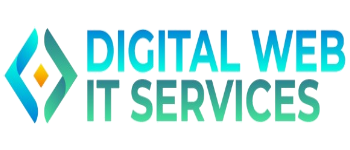- Swiss 5000
- Design and Development
- 5000 USD
- Feb 23, 2024
Swiss 5000 App
Idea and Conceptualization
Objective Definition: Before any development starts, it’s important to understand the app’s purpose. What problem does it solve? Who is the target audience? What features will make it unique or valuable?
Research & Brainstorming:
This phase involves market research, analyzing competitors, and brainstorming possible features and user flows.
Objective Definition: Before any development starts, it’s important to understand the app’s purpose. What problem does it solve? Who is the target audience? What features will make it unique or valuable?
Research & Brainstorming:
This phase involves market research, analyzing competitors, and brainstorming possible features and user flows.
R
equirement Gathering
Client Meetings: If you’re working with a client, you’ll discuss their vision in detail to ensure you understand the goals, functionality, and aesthetic preferences.
Feature List: Create a comprehensive list of features and prioritize them according to their importance (essential vs. nice-to-have features).
Technical Specifications: Outline any technical requirements such as platform (iOS, Android, or web), third-party integrations, and system architecture.
Client Meetings: If you’re working with a client, you’ll discuss their vision in detail to ensure you understand the goals, functionality, and aesthetic preferences.
Feature List: Create a comprehensive list of features and prioritize them according to their importance (essential vs. nice-to-have features).
Technical Specifications: Outline any technical requirements such as platform (iOS, Android, or web), third-party integrations, and system architecture.
Wireframes: These are low-fidelity, skeletal representations of the app’s layout. Wireframes map out the app’s structure, providing a visual guide for how the app’s interface will be organized.
Prototyping: After wireframes, you can create a prototype (interactive model) to demonstrate the user flow and the app’s functionality. Tools like Figma, Sketch, or Adobe XD are commonly used in this phase.
UI Design (User Interface): In this phase, you work on the look and feel of the app. This includes choosing color schemes, typography, icons, buttons, and other visual elements. The goal is to create a visually appealing design that aligns with the brand.
UX Design (User Experience): Focus on how users interact with the app. This is about making the app easy to use, intuitive, and pleasant. You’ll focus on navigation, user flow, and ensuring that each interaction feels natural.
Design Review: Once the UI/UX design is complete, share it with stakeholders for feedback and make any necessary revisions.
Front-End Development: This is where the user interface is brought to life. It includes writing the code for the app’s layout, navigation, animations, and interactive elements using languages like HTML, CSS, JavaScript (React, Angular, etc.), or Swift for native iOS apps.
Back-End Development: The back-end handles the server-side logic, databases, authentication, and APIs. It ensures that the app’s data is processed and stored correctly. Technologies often used include Node.js, Python, Ruby on Rails, and PHP.
API Integration: If the app requires third-party services (e.g., payment gateways, social media integration, or maps), the back-end will integrate those APIs into the app.
Functionality Testing: Check that all the app features work as intended and that the app is bug-free. This includes testing buttons, forms, and all interactive elements.
Usability Testing: Ensure the app is intuitive to use by gathering feedback from real users. This may involve conducting user interviews, surveys, or observing user interactions.
Performance Testing: Test the app’s performance under different conditions (e.g., varying network speeds, heavy user load).
Security Testing: Test the app for vulnerabilities to ensure it is secure and user data is protected.
Compatibility Testing: Ensure the app works across various devices, screen sizes, and operating systems (e.g., different iOS/Android versions).
App Store/Play Store Submission: Once the app passes all tests, it’s time for deployment. For mobile apps, submit them to the App Store (iOS) or Google Play Store (Android). This step requires meeting each store’s guidelines and getting approval.
Server Setup: For web apps or apps with back-end services, deploy the app to a server, ensuring it is properly configured for scaling and security.
Launch Campaign: Announce the launch through social media, email campaigns, or ads to ensure users know about the new app.
Monitoring: After the app is launched, monitor its performance to ensure everything runs smoothly. This includes tracking user behavior, identifying bugs, and keeping an eye on server health.
Bug Fixes and Updates: Quickly fix any bugs or issues that arise post-launch. Provide regular updates to improve functionality, add new features, or optimize performance.
User Feedback: Collect user feedback regularly and use it to guide future updates and improvements.










